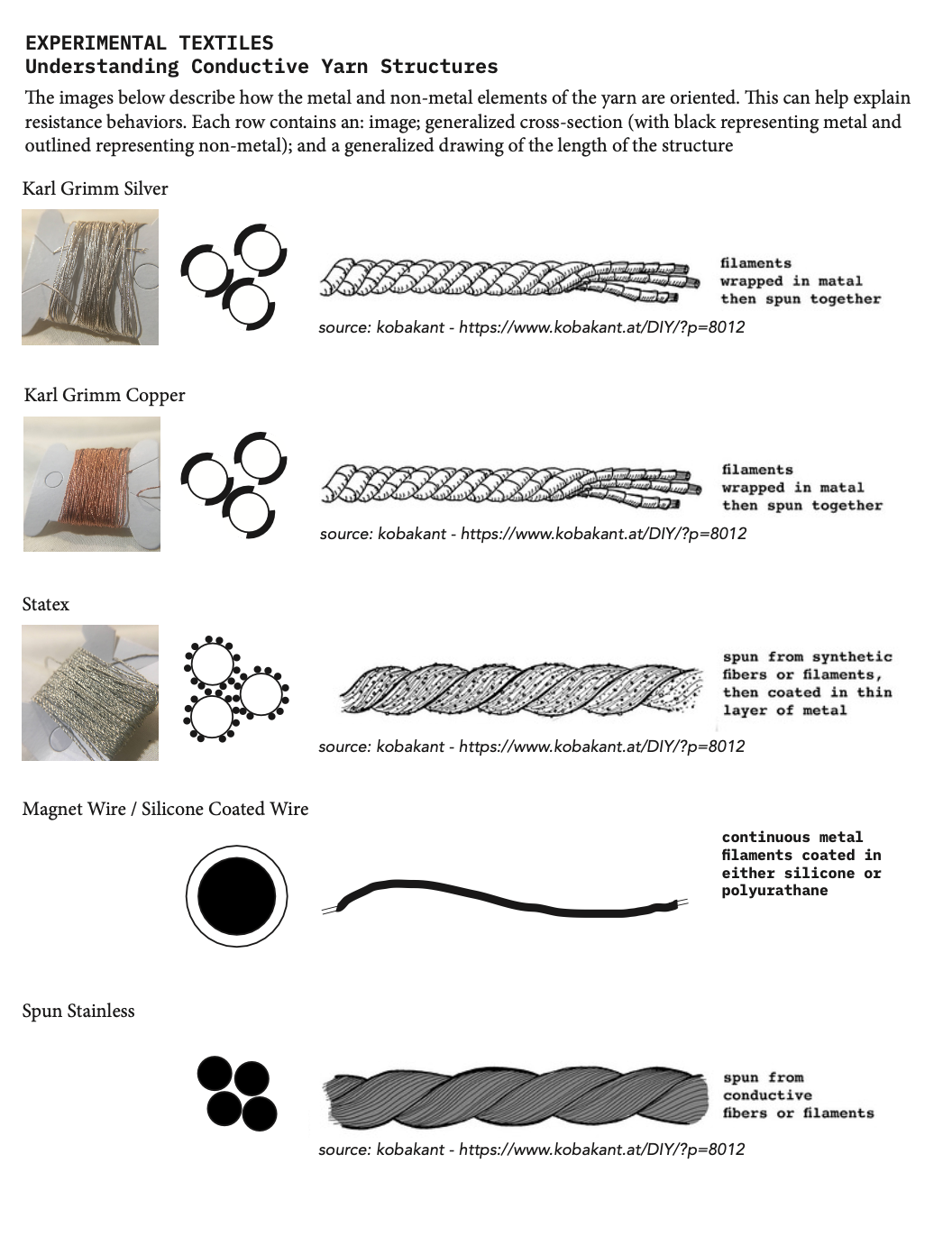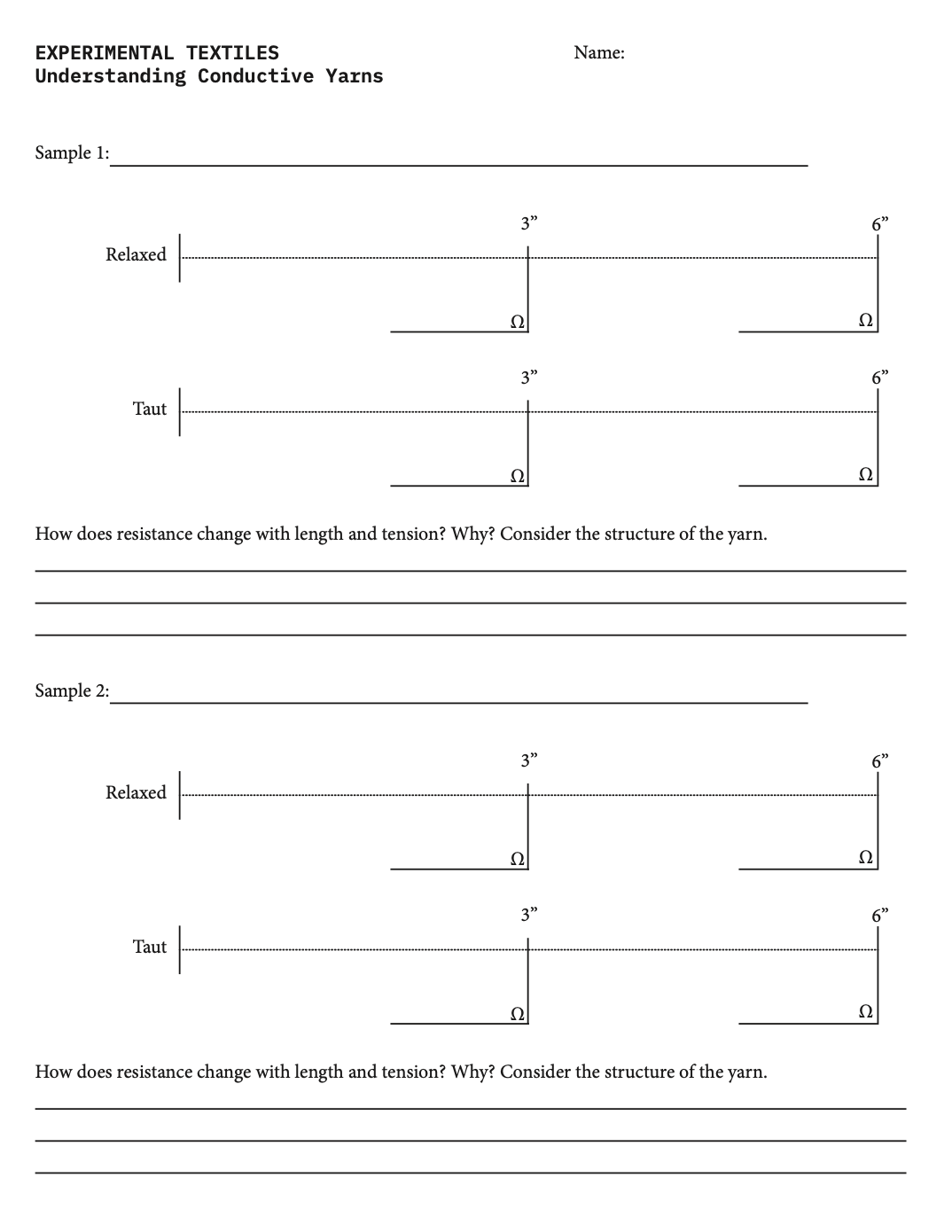Understanding Conductive Yarn Structures (and how they affect Resistance) #
Resistance is an important concept in e-textiles and particularly woven e-textiles. You will need a strong understanding of resistance in order to make your own sensors. To do this, we’ll get a sense of resistance as a quality of materials, not a mystical electrical number. A good working understanding of resistance for woven sensing is that its just about telling us how much metal will be touching metal. To develop this understanding you’ll need your multi-meter and several samples of conductive yarns. You will take measurements of your samples at different lengths and tensions, review the structural diagram of the yarn, and use it to come up with a possible explanation of why this material is measuring these specific values.
The Worksheet #
The first two pages prompt you to measure different materials and explain them.
The third page attempts to represent the structure of different types of conductive yarns.

Further Resources #
eTextiles Lounge “What is Conductive Thread”
eTextiles Lounge “How to Choose a Conductive Thread”
The paper below has a really nice in depth discussion of how yarn structure affects a sensor’s behavior, albeit in the context of sewing:
Anita Vogl, Patrick Parzer, Teo Babic, Joanne Leong, Alex Olwal, and Michael Haller. 2017. StretchEBand: Enabling Fabric-based Interactions through Rapid Fabrication of Textile Stretch Sensors. In Proceedings of the 2017 CHI Conference on Human Factors in Computing Systems (CHI ‘17). Association for Computing Machinery, New York, NY, USA, 2617–2627. https://doi.org/10.1145/3025453.3025938
